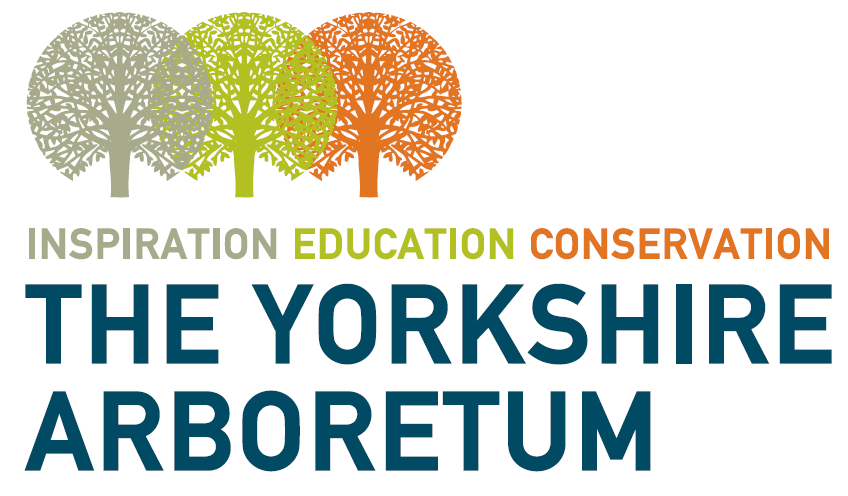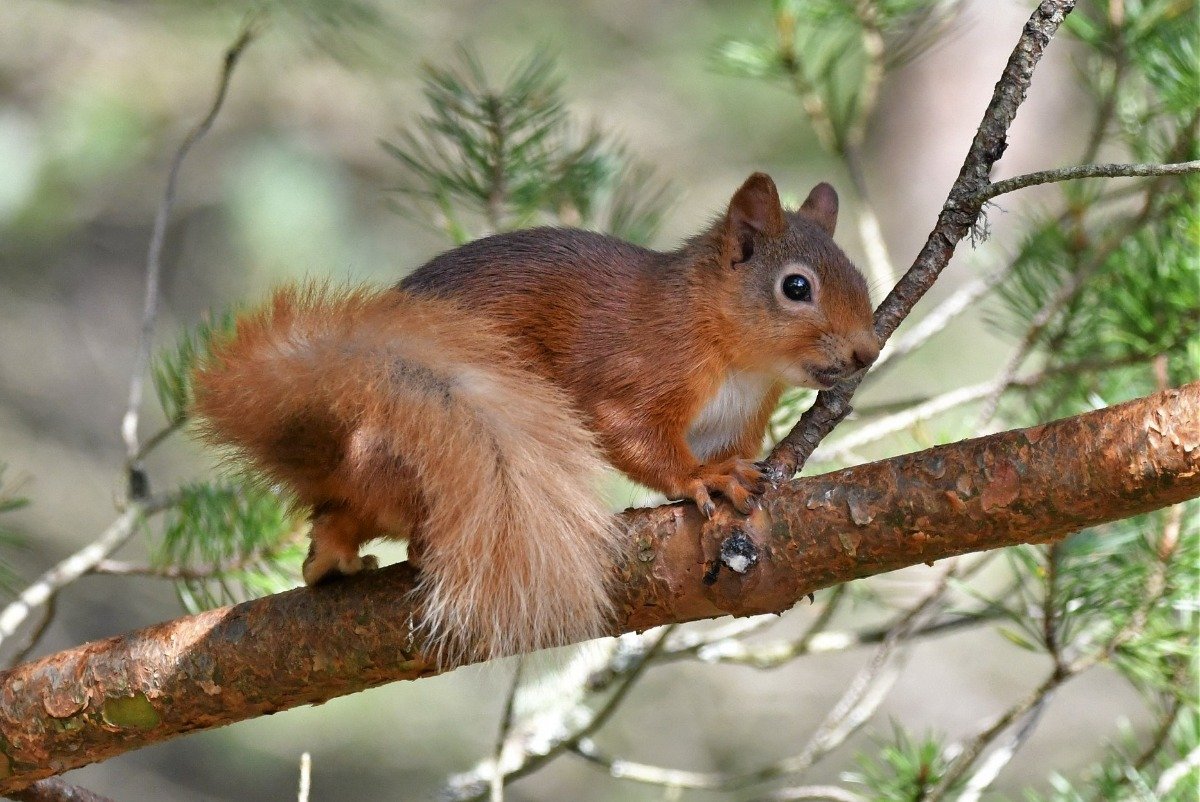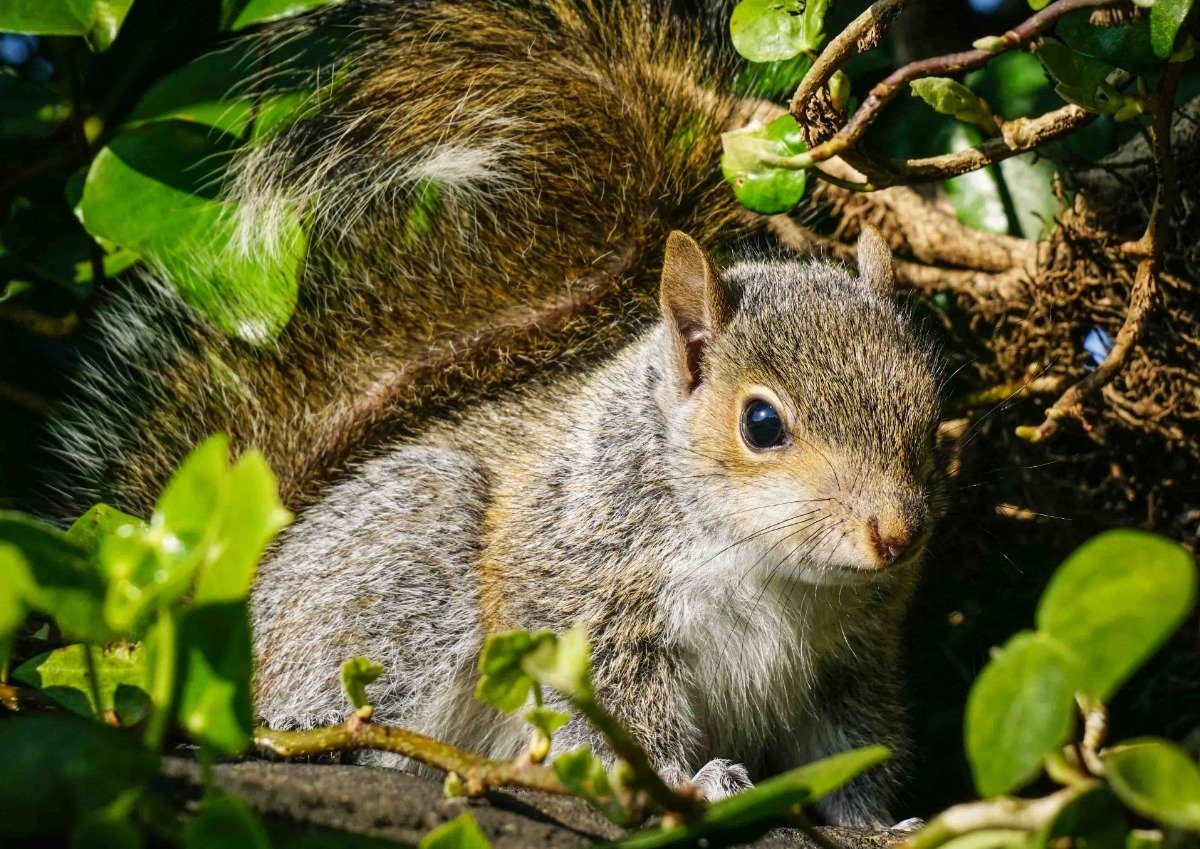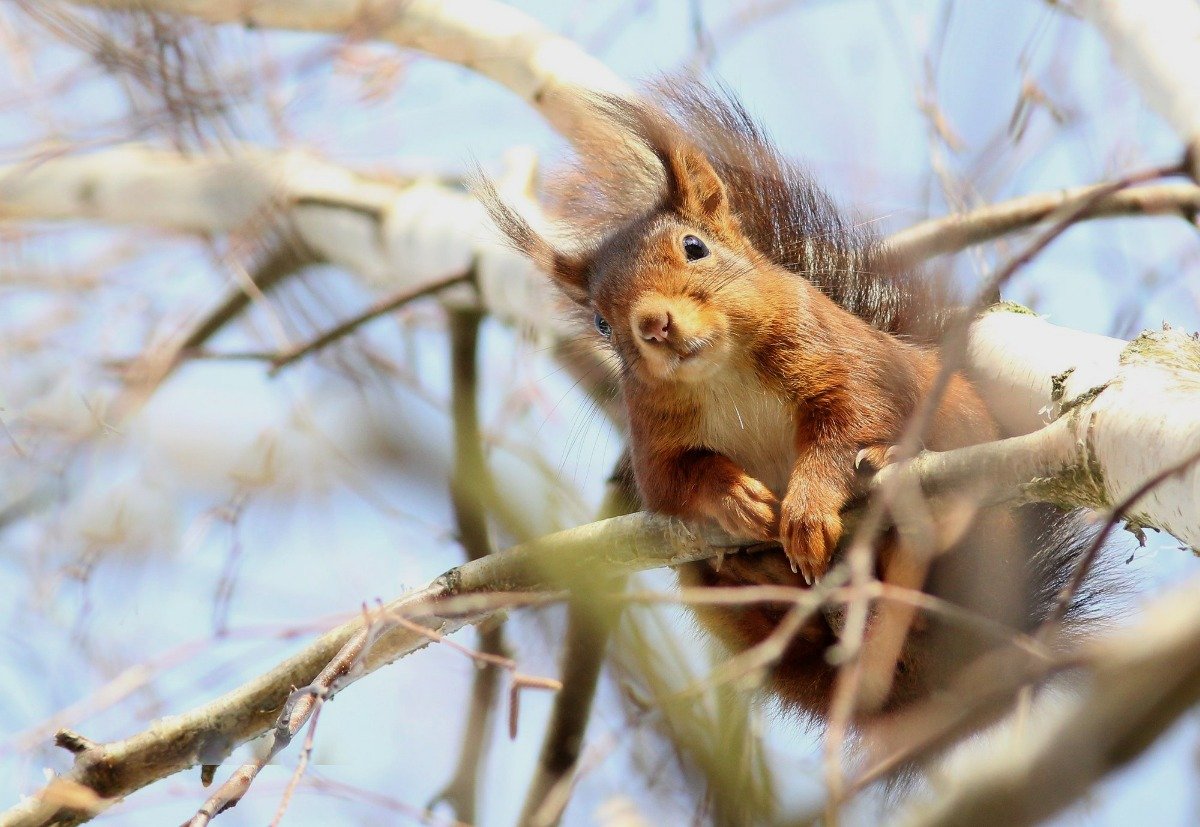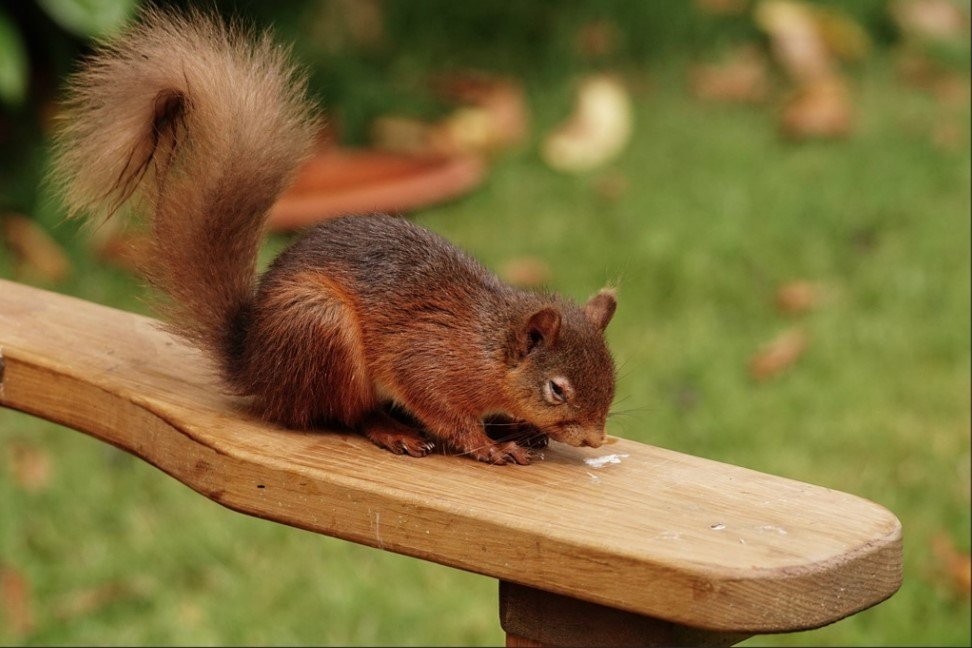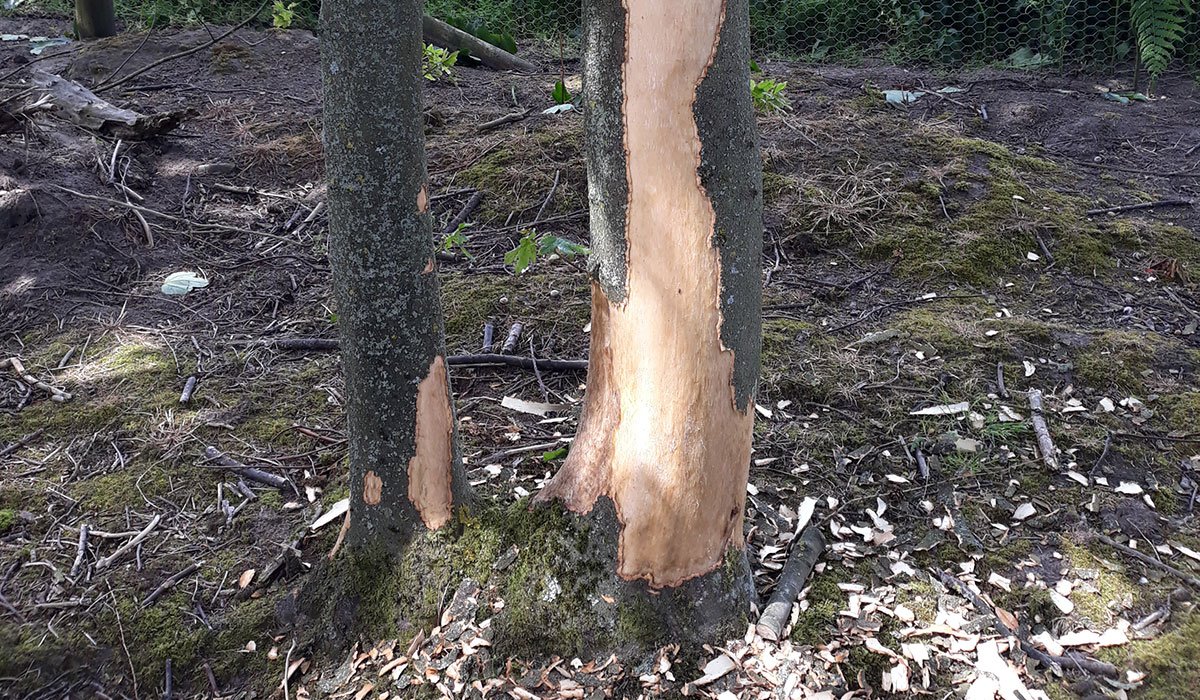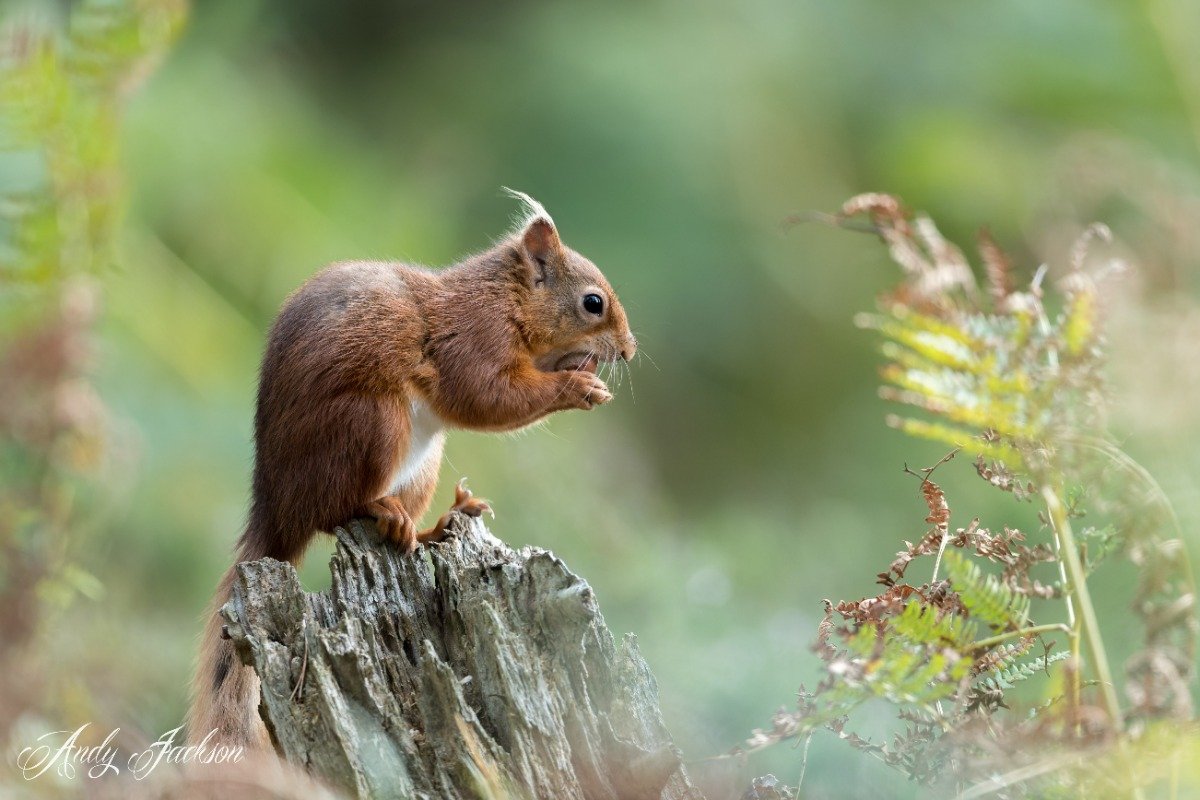(c) Nicholas Box
Red Squirrels at the Yorkshire Arboretum
At the Yorkshire Arboretum we have a small breeding group of native Red Squirrels Sciurus vulgaris, maintaining a captive population for future reintroductions, and enabling us to tell the story of a native mammal lost from most of our woodland.
The Red Squirrel enclosure has been designed and built entirely by Yorkshire Arboretum staff and volunteers. It’s modelled on similar designs elsewhere, with a perimeter of steel panels with a non-grip coating and a 3m no-leap zone all around, designed to keep Red Squirrels in and Grey Squirrels out.
The fence circles 2500m2 of ground, including a grove of oaks and other trees, in which the squirrels live natural lives. Please remember that they may not always be visible as they sleep or are in their dreys with young.
There is no extra charge to visit the enclosure. Although Red Squirrels may be seen throughout the day, they tend to be most active in the morning and afternoon. To discover more about them join our free talk on Tuesdays & Saturdays at 10.30am, (March-Oct, weather dependent) normal admission applies.
Please note: to keep the Red Squirrels safe, we have some important rules for entering the enclosure, these will be displayed by the door to the enclosure. Please follow them.
Look Out for Red Squirrels
This project will help boost Red Squirrel numbers in Britain by providing space for a new breeding colony. The squirrels living in this enclosure have come from participants in the British and Irish Association of Zoos and Aquariums (BIAZA) Red Squirrel Studbook network, which aims to ensure a genetically diverse population in captivity.
It will take time to build up the number of Red Squirrels living here. Please follow these guidelines for the best chance of spotting one:
Please walk slowly and quietly so you don’t frighten the Red Squirrels.
Look out for the Red Squirrels and their dreys (nests) in the tree canopy.
Please do not feed or touch the Red Squirrels.
Please be aware that Red Squirrels may bite.
Please close the doors quietly so you don’t disturb the Red Squirrels.
Photography: (c) Gary Bruce Highland Photographer (above left) (c) Adrian Kirby (above right)
A Tale of Two Squirrels
Red Squirrels Sciurus vulgaris were once a common sight in the English countryside, living in harmony with our woodlands. Over the past century they have been wiped out from most areas by squirrel pox, a disease carried by the Grey Squirrel Sciurus carolinensis, introduced from North America around 1900. Today the Red Squirrel is classed as endangered, with less than 30,000 living in England.
Our Red Squirrel Project will help boost Red Squirrel numbers in Britain by providing space for a new breeding colony, whose offspring may be used for reintroduction projects.
As part of our mission to promote healthy trees and woodland, the project educates about the challenges Grey Squirrels cause for Red Squirrels and our woodlands, while providing an opportunity for a close encounter with the beautiful and engaging, yet increasingly rare native squirrel.
Photography: (c) John M Green (above left) (c) Theo Louis (above right)
The Grey Squirrel Problem
The Grey Squirrel is an asymptomatic carrier of the squirrel pox virus which is lethal to Red Squirrels and easily transmitted when food sources are shared.
The arrival of Grey Squirrels into Red Squirrel territory invariably results in the disappearance of Red Squirrels.
Grey Squirrels cause damage to woodland by stripping bark from trees to feed on the sap and nutrients beneath. Many of our native broadleaved trees are at risk. Damaged trees are less likely to grow into mature trees, which produce timber and support our ecosystem.
Unfortunately, this means that Grey Squirrel control is necessary. Contraceptive and gene-editing methods of reducing the population are under investigation.
Photography: Red Squirrel with squirrel pox virus (c) Peter Trimming (above left) Grey Squirrel damage as a result of bark-stripping (c) John M Grimshaw (above right)
The Life of a Red Squirrel
In the wild, Red Squirrels live in mixed woodland and conifer forests. They make their home in trees, in nests known as dreys made from twigs, moss, fir and grass. Look for them here.
Red Squirrels are solitary for much of the year, coming together to breed once or twice a year in the spring and summer. They give birth to two or three kittens in each litter. Their young leave the drey from four weeks of age and are usually independent by 10 to 13 weeks.
In the wild Red Squirrels feed on pine and spruce seeds, hazelnuts, acorns, berries, fungi and green shoots. In autumn, when their food source is most plentiful, they eat more and gather food for the colder months. They do not hibernate in winter but are less active, surviving on food stored underground or in tree crevices.
Here their food is a mix of many different seeds, supplemented with fruit and vegetables such as carrots. Hazelnuts and walnuts are given as treats.
Photography: (c) Andy Jackson (above left and right)
Thank You
The Red Squirrel Enclosure at the Yorkshire Arboretum has been made possible by generous funding received from The Prince of Wales’s Charitable Fund.
The enclosure was designed by Ben Paterson and constructed entirely by him and a team of volunteers during 2021-2022. The arboretum is proud of and extremely grateful for this tremendous effort.
Mark Hearld produced and kindly donated the Red Squirrel logo.
We gratefully acknowledge the abundant help and encouragement received from many individuals and organisations that has made this project possible, including the UK Squirrel Accord, the BIAZA Red Squirrel Studbook, the Animal and Plant Health Agency, the Howardian Hills AONB and Ryedale District Council, Castle Howard Estate, the Castle Howard Arboretum Trust and all those who have freely advised us from their experience of keeping Red Squirrels.
Follow Us @YorksArboretum #YAredsquirrels
A bird’s eye view of the Red Squirrel Enclosure at The Yorkshire Arboretum (c) Nick Howard
